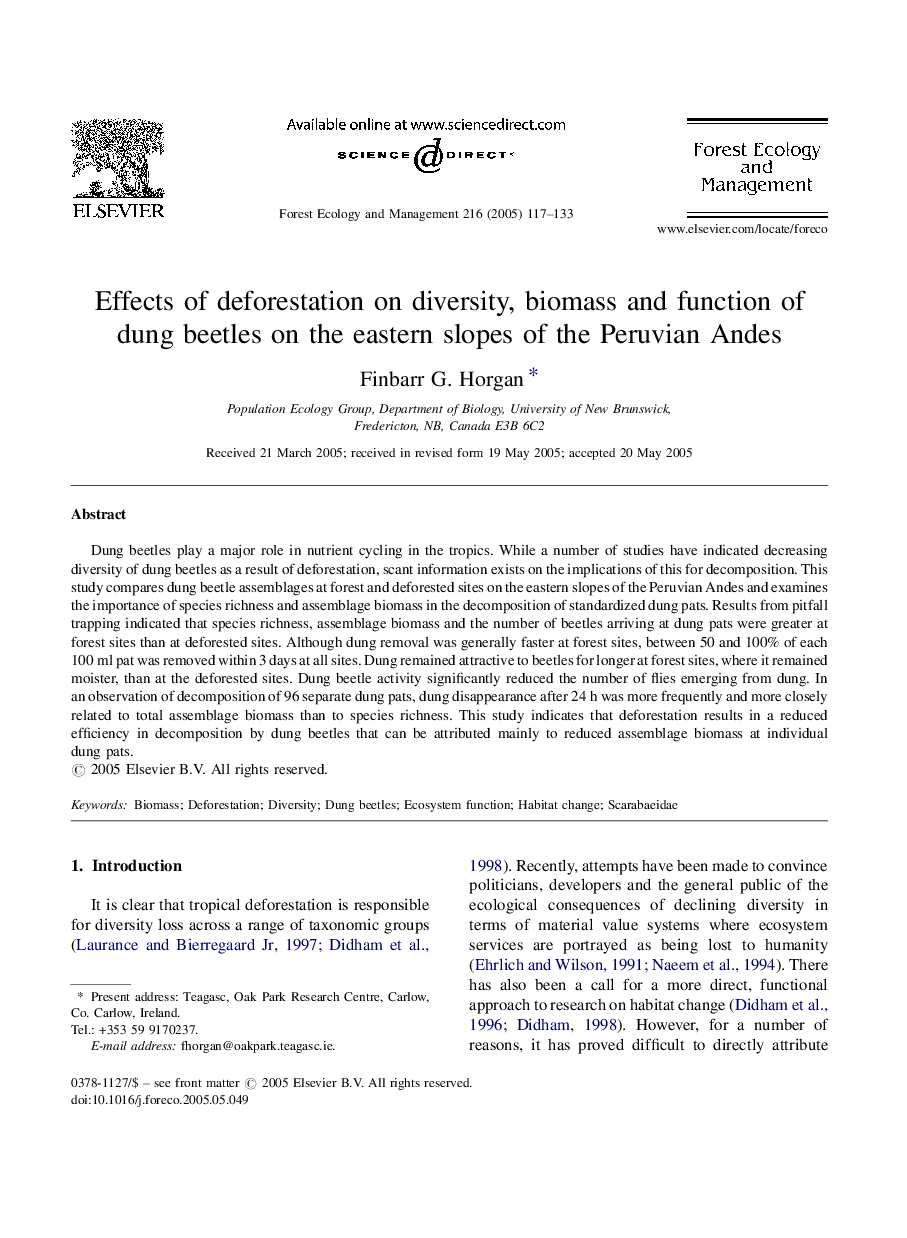| Article ID | Journal | Published Year | Pages | File Type |
|---|---|---|---|---|
| 9620173 | Forest Ecology and Management | 2005 | 17 Pages |
Abstract
Dung beetles play a major role in nutrient cycling in the tropics. While a number of studies have indicated decreasing diversity of dung beetles as a result of deforestation, scant information exists on the implications of this for decomposition. This study compares dung beetle assemblages at forest and deforested sites on the eastern slopes of the Peruvian Andes and examines the importance of species richness and assemblage biomass in the decomposition of standardized dung pats. Results from pitfall trapping indicated that species richness, assemblage biomass and the number of beetles arriving at dung pats were greater at forest sites than at deforested sites. Although dung removal was generally faster at forest sites, between 50 and 100% of each 100Â ml pat was removed within 3 days at all sites. Dung remained attractive to beetles for longer at forest sites, where it remained moister, than at the deforested sites. Dung beetle activity significantly reduced the number of flies emerging from dung. In an observation of decomposition of 96 separate dung pats, dung disappearance after 24Â h was more frequently and more closely related to total assemblage biomass than to species richness. This study indicates that deforestation results in a reduced efficiency in decomposition by dung beetles that can be attributed mainly to reduced assemblage biomass at individual dung pats.
Related Topics
Life Sciences
Agricultural and Biological Sciences
Ecology, Evolution, Behavior and Systematics
Authors
Finbarr G. Horgan,
